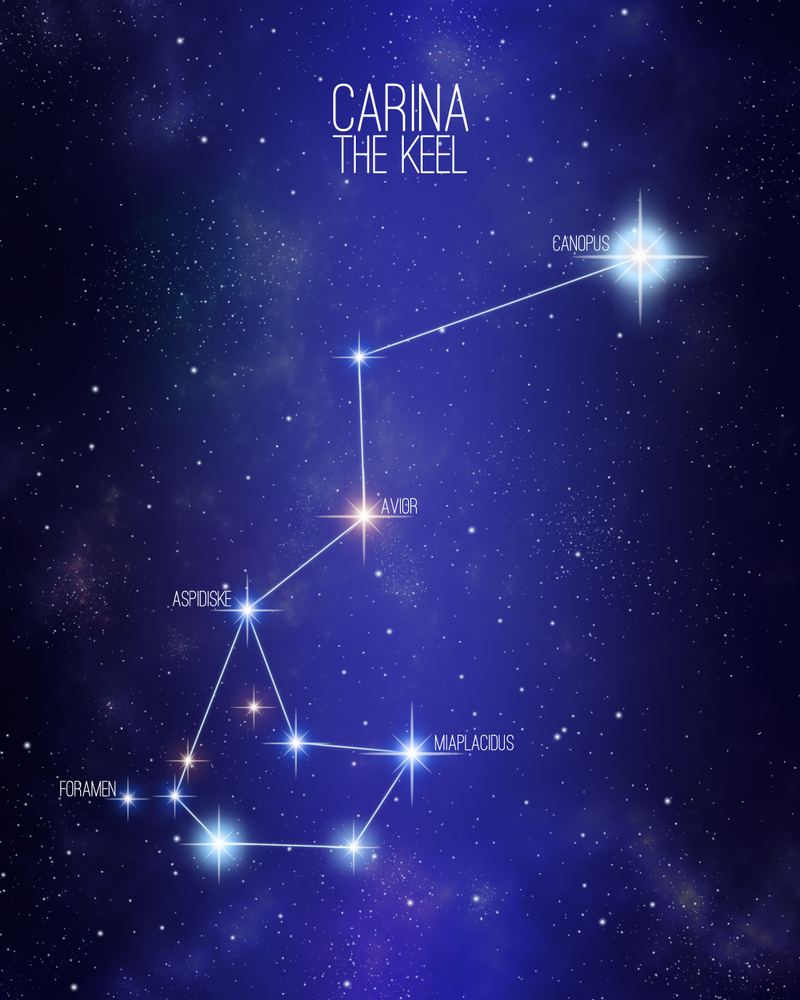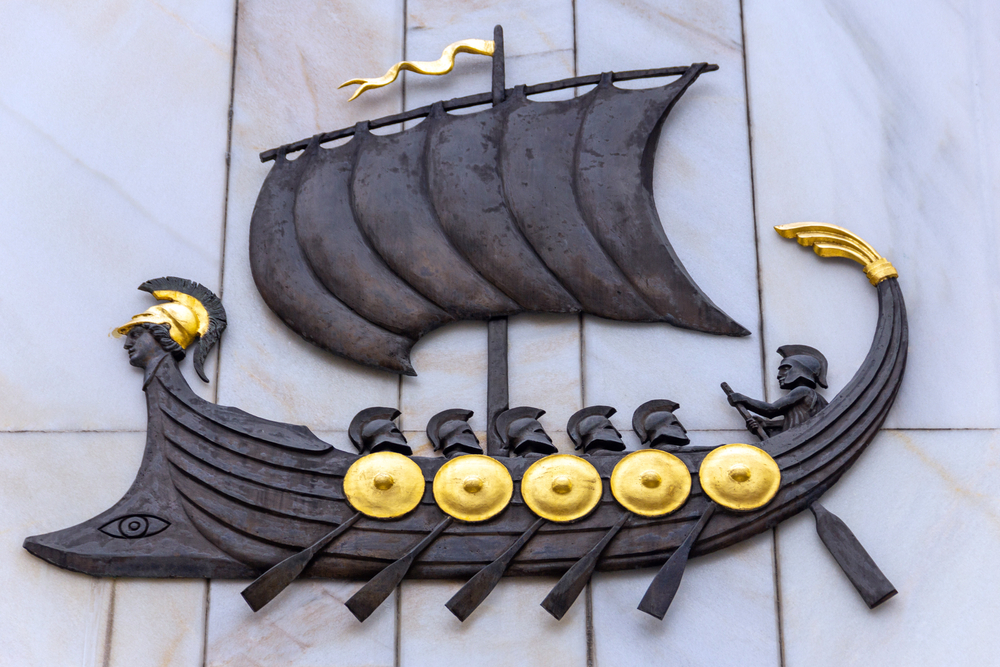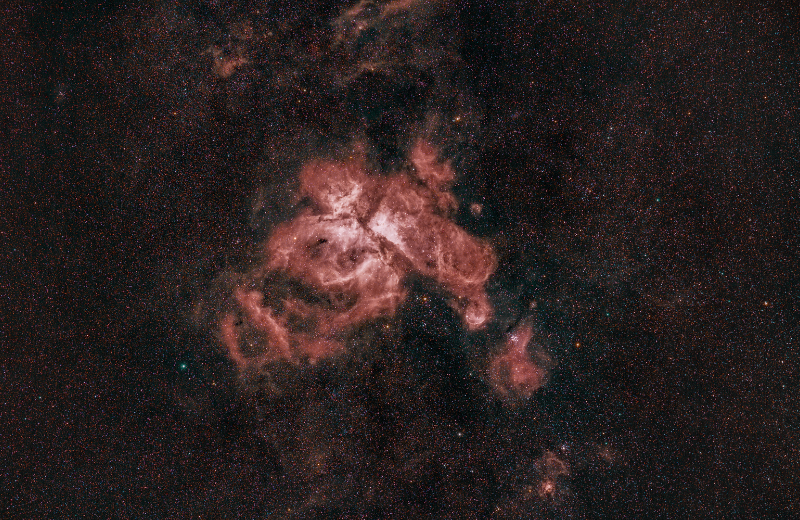The Argo Navis constellation is a celestial marvel, carrying with it tales of adventure and exploration. If you're curious about this ship of the stars, you’re in the right place. This guide introduces you to the Argo Navis constellation, its mythology, its stars, and how you can spot it in the night sky.
Jump to:
Recommended for you!
Best SellersWhat is the Argo Navis Constellation?
The Argo Navis constellation is one of the most famous celestial formations from antiquity. Its name translates to "the ship of Argo," and it represents the mythical ship that carried Jason and the Argonauts on their quest for the Golden Fleece in Greek mythology. This vast constellation was recognised by ancient astronomers for its striking shape and significant size.
In modern astronomy, however, the Argo Navis constellation no longer exists in its original form. It was divided into three smaller constellations in the 18th century by French astronomer Nicolas-Louis de Lacaille. These new constellations are known as Carina (the keel), Puppis (the stern), and Vela (the sails).
What Does Argo Navis Look Like?

The original Argo Navis constellation was one of the largest constellations in the night sky. Its shape was said to resemble a large ship, complete with sails, a stern, and a keel. When it was divided into Carina, Puppis, and Vela, each section retained parts of the ship's structure, but the grand imagery of the full vessel was lost. Together, these constellations still tell the story of Argo Navis and its role in the adventures of Jason and the Argonauts.
How Far is the Argo Navis Constellation from Earth?
The stars that make up the Argo Navis constellation are spread across various distances from Earth. For example, Canopus, the brightest star in Carina and the second-brightest star in the entire night sky, is located approximately 310 light-years away. Other notable stars within the former boundaries of Argo Navis, such as Naos in Puppis, are much farther, at around 1,080 light-years.
The Argo Navis Constellation Myth

The Argo Navis constellation is deeply rooted in Greek mythology. It represents the ship used by Jason and the Argonauts during their epic voyage to retrieve the Golden Fleece. According to the myth, the ship was crafted by Argus, a master shipbuilder, with guidance from the goddess Athena. It was said to be the first ship capable of traversing the open seas, and it carried a crew of heroes, including Heracles and Orpheus.
In the mythological narrative, the Argo was both a vessel for adventure and a symbol of innovation and bravery. After the successful completion of the quest, the ship was placed among the stars as a tribute to the Argonauts' courage and determination.
Argo Navis' Stars
The stars of the original Argo Navis constellation are now part of Carina, Puppis, and Vela. Here are some of the most notable ones:
- Canopus (Alpha Carinae): The second-brightest star in the night sky, located in Carina. Its brilliance has made it a navigational aid for sailors for centuries.
- Naos (Zeta Puppis): A massive and luminous star in Puppis, known for its bluish hue.
- Suhail (Lambda Velorum): A bright star in Vela, often associated with exploration due to its visibility in the Southern Hemisphere.
These stars contribute to the lasting legacy of the Argo Navis constellation, even after its division.
Nebulae in the Argo Navis Constellation

The regions of the sky once occupied by Argo Navis are home to several remarkable nebulae. The Carina Nebula, located in the Carina constellation, is one of the most stunning examples. It is a massive cloud of gas and dust where new stars are born, and it contains the famous star Eta Carinae, known for its unpredictable brightness.
Recommended for you!
Best SellersFinding Argo Navis in the Sky
To catch a glimpse of the remnants of the Argo Navis constellation, focus on its modern components: Carina, Puppis, and Vela. Stargazing during the southern summer months, particularly from December to March, offers the best opportunity to view these constellations as they reach their highest points in the sky.
Locating Carina, Puppis, and Vela
Start by identifying the prominent Carina constellation, home to Canopus, the second-brightest star in the sky. From there, you can trace Puppis to the west of Carina and Vela to the east, forming the sections of the original Argo Navis. Together, these constellations represent the keel, stern, and sails of the mythical ship.
Using a star map or stargazing app can help pinpoint the stars within these constellations, particularly in areas with less visible skies or faint stars.
Viewing Carina, Puppis, and Vela with Binoculars or a Telescope
- With Binoculars: While some stars may appear dim to the naked eye, binoculars can bring the constellations into sharper focus, allowing you to appreciate their formations more clearly.
- With a Telescope: A telescope can reveal the intricate details of these constellations, including deep-sky wonders like the Carina Nebula and the Vela Supernova Remnant. Highlighting stars such as Canopus in Carina or Gamma Velorum in Vela enhances the overall viewing experience.
Best Viewing Conditions
Choose a location with minimal light pollution, and plan your stargazing on a clear, moonless night. These conditions will optimise your view of the constellations’ subtle features and allow you to enjoy the grandeur of the stars that once formed the mighty Argo Navis.
Fun Facts About Argo Navis
- Argo Navis was the largest constellation in the ancient Greek sky.
- Its division into three smaller constellations was necessary because its size made it challenging to study and map.
- The constellation has been mentioned in historical texts by figures like Ptolemy, one of the most influential ancient astronomers.
Study Astronomy for £29
If you’ve enjoyed this guide to the Argo Navis constellation and want to learn more about the stars, nebulae, and other wonders of the universe, consider studying astronomy in greater depth. Centre of Excellence offers an Astronomy Diploma Course that provides a fascinating introduction to stargazing, celestial objects, and the science behind the night sky. The course is currently available for just £29!


















